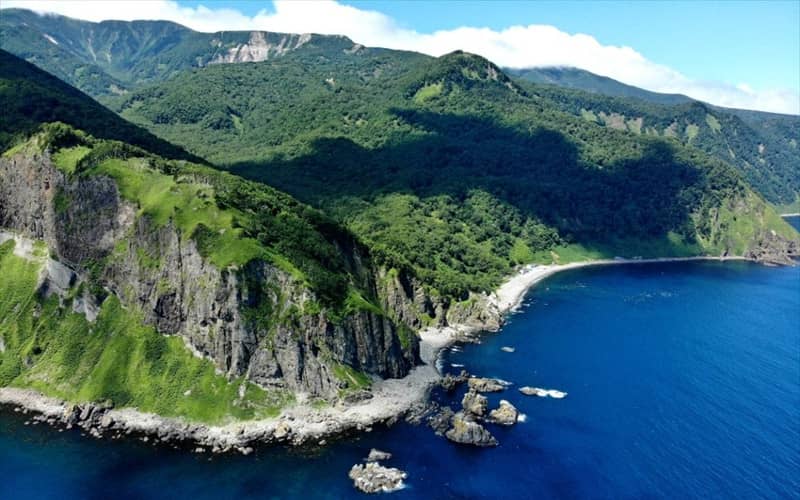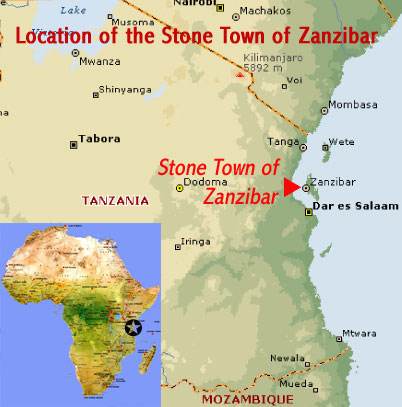Discover the Natural Wonders of Shiretoko National Park Hokkaido Japan
Shiretoko National Park in Hokkaido, Japan, stands as a pristine sanctuary renowned for its breathtaking landscapes, diverse ecosystems, and rich cultural heritage. This UNESCO World Heritage site offers visitors an unparalleled experience of untouched nature, where lush forests, rugged coastlines, and abundant wildlife converge to create a truly unique environment. Exploring Shiretoko National Park in Hokkaido, Japan, provides an opportunity to witness rare species such as the brown bear, Steller’s sea eagle, and various marine mammals, making it a must-visit destination for nature enthusiasts and adventure seekers alike. The park’s remote location and well-preserved habitats make it an ideal place for eco-tourism, offering activities like hiking, wildlife observation, and hot spring bathing, all set against the backdrop of spectacular scenery. Whether you’re interested in exploring the dramatic cliffs along the coastline, relaxing in natural hot springs, or observing the diverse flora and fauna, Shiretoko National Park in Hokkaido, Japan, promises an unforgettable journey into the heart of Japan’s natural beauty. For more information and travel arrangements, visit Shiretoko National Park-Iran Charter.

Discover the Unique Ecosystems of Shiretoko National Park Hokkaido Japan
Shiretoko National Park in Hokkaido, Japan, is renowned for its pristine wilderness and diverse ecosystems. This UNESCO World Heritage site boasts a rich variety of habitats, including dense forests, coastal areas, and volcanic landscapes. The park is home to rare and endemic species such as the Japanese brown bear, Ezo fox, and the Steller’s sea eagle, making it a vital area for biodiversity conservation. Visitors can explore untouched nature, witness the natural cycles of flora and fauna, and learn about the ecological significance of this protected region. The park’s ecosystems play a crucial role in maintaining regional environmental balance and support a wide array of wildlife, some of which are found nowhere else on Earth.
Exploring the Rich Wildlife of Shiretoko National Park Hokkaido Japan
The wildlife in Shiretoko National Park is truly extraordinary, offering a glimpse into Japan’s natural heritage. The park provides habitat for iconic species such as the Japanese brown bear, which roams freely in the forests, and the elusive Ezo deer. Birdwatchers can spot rare species like the Steller’s sea eagle and white-tailed sea eagle nesting along the coastlines. Marine life is equally diverse, with opportunities to observe whales, dolphins, and sea lions in their natural environment. The park’s protected status ensures the survival of these species and supports ongoing research and conservation efforts. Visitors are encouraged to observe wildlife responsibly, respecting their natural habitats to preserve the ecological integrity of Shiretoko.
Unforgettable Natural Attractions and Scenic Spots in Shiretoko Hokkaido Japan
Shiretoko National Park offers breathtaking natural attractions that captivate every visitor. The iconic Shiretoko Five Lakes feature crystal-clear waters surrounded by lush forests, providing perfect spots for sightseeing and photography. Kamuiwakka Hot Springs, with its natural hot waterfalls, offers a unique bathing experience amid stunning scenery. The rugged coastline, with towering cliffs and secluded beaches, showcases the raw power of nature. The Rausu Volcano and nearby mountain ranges provide panoramic views and opportunities for hiking and mountaineering. These scenic spots highlight the park’s diverse landscapes, making it a paradise for nature lovers and adventure seekers alike.
Adventures and Outdoor Activities in Shiretoko National Park Hokkaido Japan
Adventure enthusiasts can enjoy a variety of outdoor activities in Shiretoko National Park. Trekking along well-marked trails allows visitors to immerse themselves in untouched nature and observe wildlife in their natural habitat. Boat tours along the coast offer a chance to see marine mammals like whales and sea lions up close. During winter, the park transforms into a snowy wonderland, perfect for snowshoeing, cross-country skiing, and ice fishing. For the more daring, mountain climbing and glacier trekking provide exhilarating experiences. These activities promote eco-tourism and help raise awareness about the importance of preserving this pristine environment.
Best Hiking Routes and Trails in Shiretoko Hokkaido Japan
Shiretoko National Park features numerous hiking routes suitable for all levels of outdoor enthusiasts. The Shiretoko Nature Trail takes visitors through lush forests and offers spectacular views of waterfalls and wildlife. The Rausu Mountain trail provides challenging climbs with rewarding panoramic vistas of the surrounding landscape. The Five Lakes Loop is an accessible route ideal for families, offering scenic views and opportunities to spot local fauna. Proper preparation, including suitable gear and awareness of weather conditions, is essential for a safe and enjoyable experience. These trails showcase the park’s natural beauty and promote sustainable tourism practices.
Conservation Efforts and Environmental Protection in Shiretoko Hokkaido Japan
Protecting the delicate ecosystems of Shiretoko National Park is a priority for local authorities and conservation organizations. Initiatives include habitat restoration projects, wildlife monitoring, and strict regulations to minimize human impact. The park’s status as a UNESCO World Heritage site emphasizes the global importance of its preservation. Education programs aim to raise awareness among visitors and local communities about sustainable practices. Ongoing scientific research helps inform management strategies to ensure the long-term health of the park’s ecosystems. These conservation efforts are vital for maintaining the biodiversity and ecological integrity of Shiretoko for future generations.
Travel Tips and Practical Information for Visiting Shiretoko Hokkaido Japan
Planning a trip to Shiretoko National Park requires careful preparation. The best time to visit is during the summer months from June to September, when weather conditions are favorable for outdoor activities. Visitors should bring appropriate clothing, including waterproof gear and sturdy footwear, to handle rugged terrain. Accommodation options range from lodges and hotels to camping sites, with advance booking recommended. It’s important to respect park regulations, stay on designated trails, and avoid disturbing wildlife. Local guides and tour operators offer valuable assistance for safe exploration. Proper planning ensures a memorable and responsible visit to this natural wonder.
Economic Impact and Tourism Development in Shiretoko Hokkaido Japan
Shiretoko National Park significantly contributes to the local economy through eco-tourism and sustainable tourism practices. The influx of visitors supports local businesses, including hotels, restaurants, and tour operators. Community-based initiatives promote employment opportunities and cultural exchange. The park’s natural attractions attract international tourists, boosting regional visibility and income. Efforts to develop eco-friendly infrastructure and promote responsible tourism help preserve the environment while supporting economic growth. Balancing conservation with tourism development is essential for maintaining the park’s pristine condition and ensuring long-term benefits for local communities.
Climate and Seasonal Changes in Shiretoko Hokkaido Japan
The climate of Shiretoko National Park varies with the seasons, influencing the landscape and wildlife activity. Winters are cold and snowy, with temperatures dropping below freezing, creating ideal conditions for winter sports and ice formations along the coast. Spring brings blooming flowers and the return of migratory birds, while summer offers mild temperatures and lush greenery, perfect for hiking and wildlife observation. Autumn features vibrant foliage and cooler weather, attracting photographers and nature lovers. Understanding seasonal patterns helps visitors plan their trips and appreciate the dynamic natural beauty of Shiretoko throughout the year. The diverse climate zones support a wide range of plant and animal life, making the park a year-round destination.

Frequently Asked Questions about Shiretoko National Park, Hokkaido, Japan
- What makes Shiretoko National Park a UNESCO World Heritage site?
- Shiretoko National Park is recognized as a UNESCO World Heritage site due to its pristine wilderness, diverse ecosystems, and unique biodiversity. The park features dense forests, volcanic landscapes, and coastal areas that host rare and endemic species like the Japanese brown bear and Steller’s sea eagle. Its well-preserved natural environment and ecological significance contribute to its UNESCO status, highlighting its importance for global conservation efforts.
- What are the main ecosystems found in Shiretoko National Park?
- The park encompasses a variety of ecosystems including dense forests, coastal zones, volcanic terrains, hot springs, and marine environments. These habitats support diverse flora and fauna, from terrestrial mammals and birds to marine life such as whales and sea lions, making it a rich biodiversity hotspot.
- Which rare species can visitors expect to see in Shiretoko?
- Visitors may encounter rare and endemic species such as the Japanese brown bear, Ezo fox, Steller’s sea eagle, and white-tailed sea eagle. Marine mammals like whales, dolphins, and sea lions are also frequently observed during boat tours, offering a unique wildlife experience.
- What are the must-visit natural attractions within the park?
- Key attractions include the Shiretoko Five Lakes with their crystal-clear waters, Kamuiwakka Hot Springs with natural waterfalls, rugged coastlines with cliffs and beaches, and the Rausu Volcano. These sites provide breathtaking scenery and opportunities for photography and exploration.
- What outdoor activities can visitors enjoy in Shiretoko?
- Popular activities include trekking on scenic trails, boat tours to observe marine wildlife, hot spring bathing, mountain climbing, and winter sports like snowshoeing and cross-country skiing. The park offers year-round adventure options for nature lovers and thrill-seekers.
- Which hiking routes are suitable for different skill levels?
- The Shiretoko Nature Trail is suitable for beginners, offering easy access to scenic views. The Rausu Mountain trail is more challenging, ideal for experienced hikers. The Five Lakes Loop is family-friendly, providing a leisurely hike with opportunities to see local wildlife.
- How does the park contribute to conservation efforts?
- Shiretoko National Park is actively involved in habitat restoration, wildlife monitoring, and implementing strict regulations to minimize human impact. Its UNESCO status emphasizes the importance of preserving its ecosystems, supported by scientific research and environmental education programs.
- When is the best time to visit Shiretoko?
- The optimal visiting period is from June to September, when weather conditions are favorable for outdoor activities. Spring and autumn also offer unique experiences with blooming flowers and vibrant foliage, respectively. Winter is ideal for snow sports and witnessing ice formations along the coast.
- What practical tips should travelers keep in mind?
- Travelers should prepare appropriate clothing for variable weather, including waterproof gear and sturdy footwear. Booking accommodations in advance is recommended. Respect park regulations, stay on designated trails, and avoid disturbing wildlife to ensure a safe and responsible visit.
- How does tourism impact the local economy?
- Eco-tourism in Shiretoko supports local businesses such as hotels, restaurants, and tour operators. It creates employment opportunities and promotes cultural exchange. Responsible tourism practices help sustain the environment while boosting regional income.
- What are the main challenges in conserving Shiretoko’s ecosystems?
- Challenges include habitat degradation, human-wildlife conflicts, and climate change. Ongoing conservation initiatives focus on habitat preservation, scientific research, and community engagement to address these issues effectively.
- Are there guided tours available for visitors?
- Yes, many local operators offer guided tours, including wildlife safaris, hiking excursions, and boat trips. Guides provide valuable insights into the park’s ecology and ensure visitors have a safe and enriching experience.
- What should visitors do to minimize their environmental impact?
- Visitors are encouraged to follow Leave No Trace principles, avoid littering, stay on marked trails, and respect wildlife. Supporting eco-friendly tour operators and adhering to park regulations also help preserve the natural beauty of Shiretoko.
- How does Shiretoko contribute to scientific research?
- The park serves as a natural laboratory for studying ecosystems, wildlife behavior, and climate change impacts. Ongoing research informs conservation strategies and enhances understanding of fragile habitats.
- What is the significance of the park’s marine environment?
- The marine ecosystem supports diverse species such as whales, dolphins, and sea lions. It plays a vital role in regional biodiversity and offers opportunities for marine observation and eco-tourism activities.
- What are the transportation options to reach Shiretoko?
- The park is accessible via flights to Kushiro or Memanbetsu airports, followed by bus or car travel. Local transportation services connect visitors to major attractions within the park area.
























